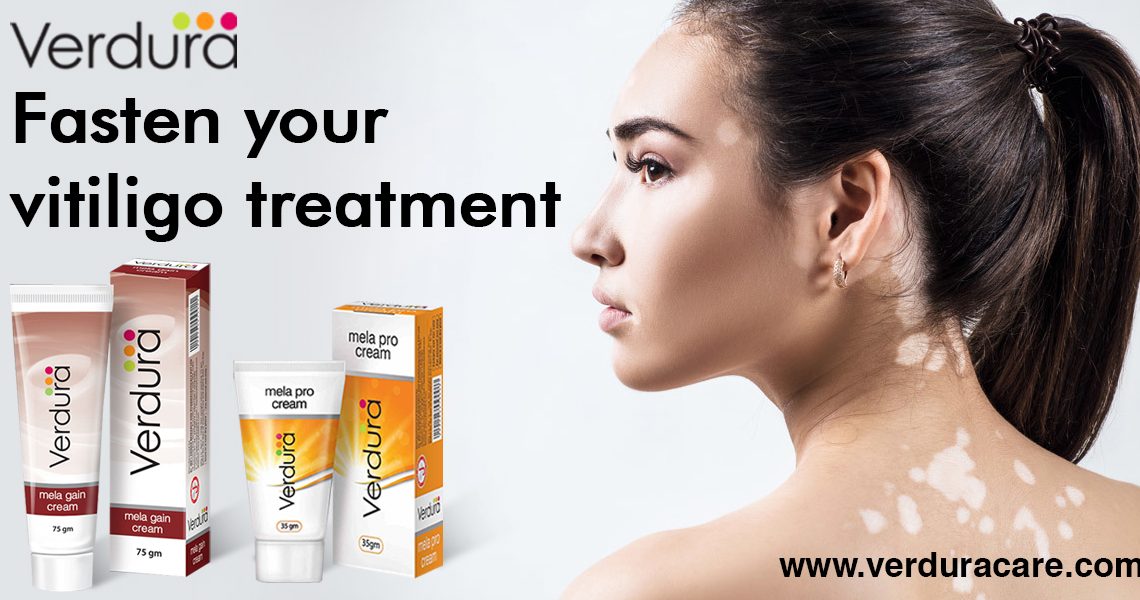TRADITIONAL TOPICAL PSORALEN IN TREATMENT OF VITILIGO

The colour of human skin depends mainly on pigments present in the skin and blood flow of the skin. The most important pigment is Melanin which is synthesized by melanocyte cells. The melanosome of melanocyte chiefly synthesize the melanin.
Melanogenesis
Melanin synthesis is influenced by
- Constitutional skin colour
- U-V radiation
- Hormone

Vitiligo
Vitiligo is a hypopigmentary skin disorder mainly due to the anatomical defect of melanocytes. It is characterised as depigmented (Milky white) patches of scalloped margins in skin with autoimmune etiology and familial predisposition. Change of hair colour into white in older lesions.


Treatment of vitiligo is not very satisfactory in many cases because exact etiology for vitiligo is unknown and different patterns of vitiligo may have different pathogenesis. Distal parts of hands and soles and non-hairy parts of skin show very slow prognosis.
Photochemotherapy
Though the treatment of vitiligo is not successful, reasonable improvement can be achieved in several patients. Photochemo theraphy is one way and it forms to mainstay of therapy in vitiligo.
Photochemo therapy is use of Psoralens in combination with UVA exposure (PUVA). Depends upon the disease, either Topical (For localised disease) or Systemic (For extensive disease) therapy is used.

Both Psoralen and Light are essential for clinical improvement as either of them used singly is not beneficial.
U-V radiation
The most important stimulus for melanogenesis (Melanin synthesis) is ultra violet radiation. Pigmentation induced by light (Called Tanning) occurs in two phases ie Immediate pigmentation and Delayed pigmentation.
Immediate pigmentation caused by exposure to UVA and mainly due to
-Photo-oxidation of the preformed melanin
– Rearrangement of melanosomes

Psoralens
Psoralens are naturally occurring tricyclic furocoumarins present in a large number of plants. Noted plants are Psoralea corylifolia and Ammi majus. Psoralens are an exogenous photosensitizer followed by ultraviolet A (UVA) irradiation. The most effective form of psoralen is 8-Methoxy Psoralen (8-MOP) which is principally of plant origin.
Response
The main principle of Topical Psoralen application is to producing a photosensitizing reaction followed by pigmentation. Repigmentation is slow. It begins in perifolicular area and also periphery of lesions and gradually becomes confluent.
Advantage of Topical Psoralen
Systemic psoralen treatment produces complaints of nausea, epigastric discomfort and giddiness. But topical application has no such side effects expect phototoxicity. In Topical therapy, required dose of sunlight is less than the systemic treatment.
Dr.JRK’s Verdura Mela Pro cream and Verdura mela gain cream
Dr.JRK’s Verdura Mela Pro cream is the modified and modern form of classical Psoralea corylifolia containing products like Karbogi pasai (Psoralea corylifolia paste) in siidha and Avalgujadi lepam in Ayurveda.


It has following benefits
- Contains Natural form of psoralens.
- Greater benefit in less photogenic reaction.
- Increases the susceptibility of skin to UV rays.
- Kindles genetic memory of the skin to produce melanin in Vitiligo.
- Proven to be hypoallergenic and safe for long term use
Method of application
Psoralen application is followed by exposure to gradually increasing doses (till mild erythema achieved) of sunlight. For sensitivity patients, alternative days exposure is preferable. According to new studies, the best time of the day to expose the sunlight is between 9.15 – 11.15 AM and 2.30-3.30 PM because there is minimal unwanted exposure to UVB and infrared light at these times.
